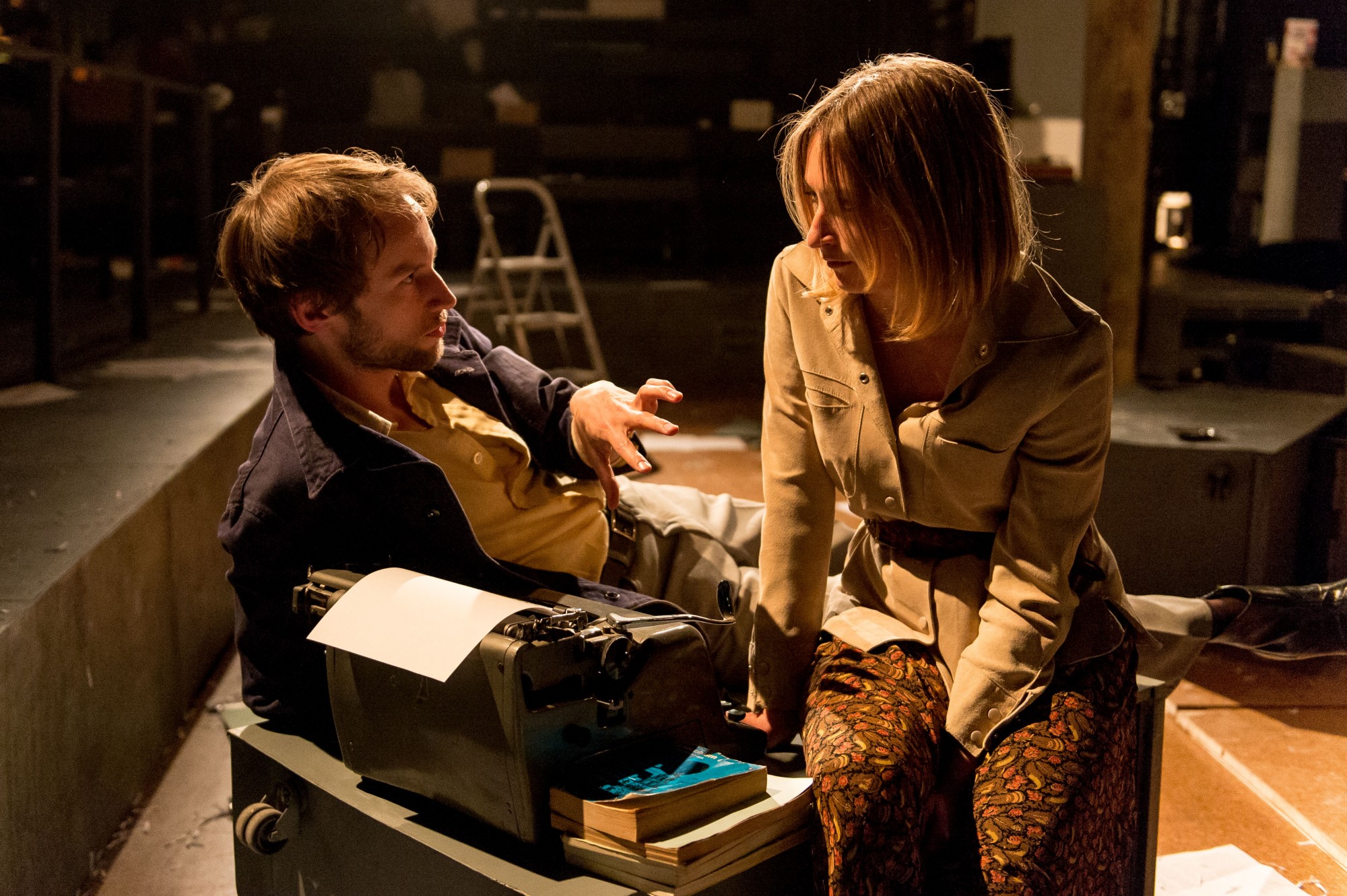70s Styling in The Angry Brigade
Thu 14 May 2015 |
Our Plays
Wardrobe Assistant for The Angry Brigade, Claire Wardroper, give us the lowdown on how 70s style shaped the costume of the cast.
The 1970s were possibly the most iconic decade of fashion to date. Most people who have first-hand recollection of the era recoil in moments of absolute embarrassment at the thought of some their favourite teenage outfits. Flares and platforms, fringed and belted suede safari jackets, nauseatingly bright patterned polyester shirts with oversized spear point collars – it all sounds pretty much like the worst fancy dress party in the world. Ever. The 1970s were all about excess, the bigger, brighter and bolder the better.
But the truth is, 1970s fashion marked a path for some of the greatest and most long-lasting fashion trends the world has ever witnessed. The polo neck, for instance, was a staple of most men’s wardrobes throughout the 70s and has firmly made a comeback amongst some of London’s hippest twenty-something business bodies; the glorious flare, which year in year out threatens to make a comeback and sort of almost gets there. Effortlessly cool Sienna Miller is a prime advocate for the “hippy chic” style that so many try to emulate. So it wasn’t all cringe and horror.

The fantastic thing about 70s fashion was that it reached everyone, old and young, working class and upper class – no one was safe from the future fashion police. The overall silhouette of 70’s fashion was in some cases deliciously flattering: the tight, cinched in belted waists, the open-necked collar, the tight-fitted trousers. Men never looked so good. Androgyny was more alive then than ever before, and David Bowie was at the forefront of the andro revolution. Men were embracing their feminine qualities in glittery spandex leggings and platform shoes. And women were stretching their tomboy legs: for the first time they were allowed to wear trousers in offices, as long as they were twinned with a matching jacket, and the Safari suit (the fashion brainchild of Yves Saint Laurent) was incredibly popular.
“Individualism was key, apart from one strange trend: “couples fashion” dressing in exactly the same clothing as your partner.”
Although now seen very much as a complete no no, in the 70s couples would don matching outfits and walk out with pride, a trend that, perhaps in a more subtle and cool way, made a comeback recently with “The Kooples” campaign. Mod culture also made a comeback towards the end of the century with the return of the Teddy boy, a more clean-cut, smooth, sophisticated look that the zanier trends lacked. Teddy boys either wore tailor-made suits with narrow lapels, thin ties and button down collars, or the straight legged trouser with donkey or workers jackets and the popular black “beatle boot” or desert boot underneath. These signature looks defined a generation ready for change: in fashion and in politics.

So how did this work whilst costuming the play? Whilst I was shopping for the show, trawling London’s finest vintage boutiques, most shop owners admitted that 70s fashion was making a comeback, much to their surprise and delight. After decades of garish nylon shirts being shunted to the back of the rails or left in storeroom boxes, 70s produce was in high demand. Which of course made everything that tiny bit harder for me. With a good 40 years’ worth of hindsight, people find it all too easy to mock the way things were (possibly due to the fact that some 70s kids are trying to forget and pretend it never happened) and as a result it might seem too much for a contemporary audience.
“Our minimalist, monotone, normcore fashion desires nowadays can’t handle the exuberance of 1970s fashion.”
With this in mind, I had to tone down the overall image of the show to suit a 21st-century audience. This. was. HARD. I was desperate to throw some disgustingly bright ties on top of hard-to-focus-on shirts, but instead I felt that subtler suggestions would work better. I mainly focused on silhouette and colour, picking out period designs such as high-waisted trousers with elaborate button and pocket detail, wide-lapelled suit jackets, rayon shirts with “kipper” ties, all in the popular shade of the time: brown. Subtle signifiers were enough to place us in the right time and location.

The actors play members of the Angry Brigade as well as 1970s police officers in the play, so it was important to find a marked difference in costuming the opposing roles, both for them as performers and for us as the audience. As explained above, there was little fashion disparity amongst the different classes and ages during the era, and this made the task of defining the two tricky. I attempted to costume the characters of the Angry Brigade as close to the limited references I could find, although hardly any are available due to the inconspicuous lifestyles they conducted. Of the few images available, we can see some clear fashion choices have been made: for instance, in the image below, Hilary Creek wears the iconic, long floral skirt with belted safari shirt on top, a look I have mimicked as closely as possible in the production. An image purportedly of Jim Greenfield in an oversized military coat and flared cords displays a typical look amongst the anarchic youth of the 70s that we capture in the show.

Fashion has always been intertwined with youth politics. Clothes have been used as a tool for expression for decades, and whilst the Angry Brigade wished to uphold an image of complete disregard for any social systems in place, they still couldn’t escape the importance of fashion. It helped that when in rare moments they were papped they looked cool and aware of their image. Despite their defiance of the consumerist world they despised, their image worked in their favour to distance themselves from fusty politicians and appeal to the generations to come. Breaking the rules will always be cool and 70s fashion aimed to do that more than any other era.
The Angry Brigade runs here at the Bush Theatre until 13 June. For more information about the play and to book tickets click here.
This blog is republished with the kind permission of Paines Plough, you can find the original blog here.







